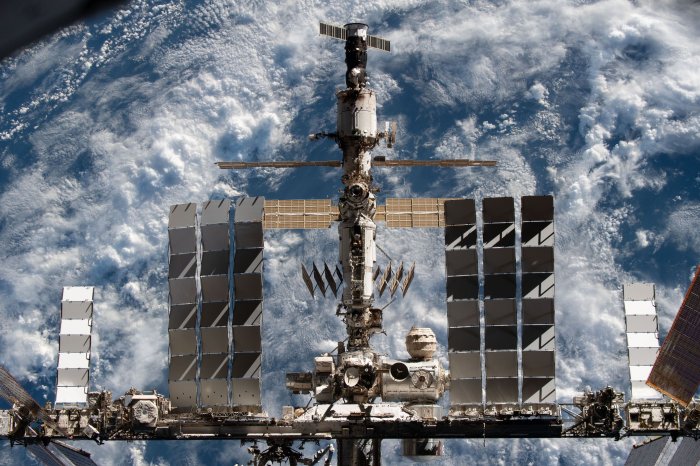1 of 6 | The blue Callisto technology demonstration will be tested inside the Lockheed Martin Orion space capsule with a mannequin on board for the Artemis I mission. Photo courtesy of Lockheed Martin
ORLANDO, Fla., Jan. 5 (UPI) -- Lockheed Martin has teamed up with Amazon and Webex to demonstrate technology on NASA's lunar Orion space capsule that will use software similar to Amazon's virtual assistant Alexa.
The demonstration, called Callisto, will fly on the uncrewed Artemis 1 lunar mission that NASA hopes to launch in the next few months. It won't be able to control the spacecraft, but it will be able to turn on and change the color of the interior lights.
Amazon also plans to roll out a new Alexa feature that will connect users with a variety of images and information about lunar missions by saying, "Alexa take me to the moon."
Callisto also will feature project management and webinar tools like Cisco's Webex interface that eventually could allow astronauts on the moon to collaborate with others in a spacecraft and at mission control.
The goal is to provide more access to more images and data than any other NASA mission, even the closely-watched Mars rover missions, Rob Chambers, Lockheed's director of strategy for commercial civil space, said in an interview.
Mission control personnel will test Callisto by speaking through a separate set of speakers inside Orion and gauging the response, Chambers said.
"The idea is not to replace astronauts ... but we can have an artificial intelligence assistant on board for the astronauts some day," Chambers said. "We just have to talk to it from the ground for the first mission because we don't have any astronauts on board."
Eventually, Callisto might help astronauts maintain the spacecraft with simple, benign tasks like adjusting solar arrays or monitoring equipment, he said.
NASA plans to land astronauts on the moon by 2025, but an official NASA watchdog report says that might not happen until 2027.
NASA has spent billions with Lockheed to develop and build Orion itself, but the defense contracting giant isn't charging any more to develop Callisto, Chambers said.
Instead, NASA signed a reimbursable Space Act Agreement with Lockheed in 2018 for the communications interface.
Lockheed then partnered with Amazon and Webex, and all three firms are hoping the product is picked up for future space missions, Chambers said.
To minimize the risks of hacking or other problems, Callisto won't connect to the internet like other Alexa products, he said.
"When you talk to your Echo Dot in the living room, it has to go to the web to interpret your sound into words and then come up with the answers and send it back," he said "But Callisto is all local -- all of the data processing is in the unit on the spacecraft itself."
Transmissions between the spacecraft, Callisto and NASA will be managed in the space agency's secure connection, Chambers said.
Alexa will also offer many features NASA already offers about space missions at NASA.gov, but in a broader variety, according to a statement from the company.
"Alexa will be able to provide you with in-depth information on Artemis I, including telemetry data from the Orion spacecraft, videos and imagery from the mission ... video of virtual crew interactions from Johnson Space Center, and reminders and notifications about key milestones in the mission," the company said.
Amazon noted in a news release that Star Trek's science fiction portrayals of a talking, interactive computer inspired Alexa and other virtual assistant technology, so putting it on a spaceship is like completing a circle.
Technology that was designed for broad audiences, like Alexa, may not fit well in highly specialized applications like a NASA spacecraft, Emily Bender, professor of computational linguistics at University of Washington in Seattle, said in an interview.
"If the goal is to learn about how to create voice assistants that will serve astronauts, I'm skeptical that this will be very relevant at all," Bender said.
But some kind of voice assistant would be valuable in space, she said.
"Voice assistants or voice-activated control of computers is really important in cases where someone needs to get work done with a computer but can't use their hands," she said. "Astronauts are likely to encounter such situations: hands are busy with tools, say, or it's difficult to use a touch-based interface in a space suit."
Such uses of artificial intelligence and voice assistants sometimes give users a false impression that the technology is better than it is, Bender said.
"If this is marketed as 'talk to the spaceship' and 'what the spaceship says back' I'm afraid it will add to the current problematic levels of AI hype," she said.
The International Space Station is pictured from the SpaceX Crew Dragon Endeavour during a flyaround of the orbiting lab that took place following its undocking from the Harmony module’s space-facing port on November 8. Photo courtesy of NASA
















